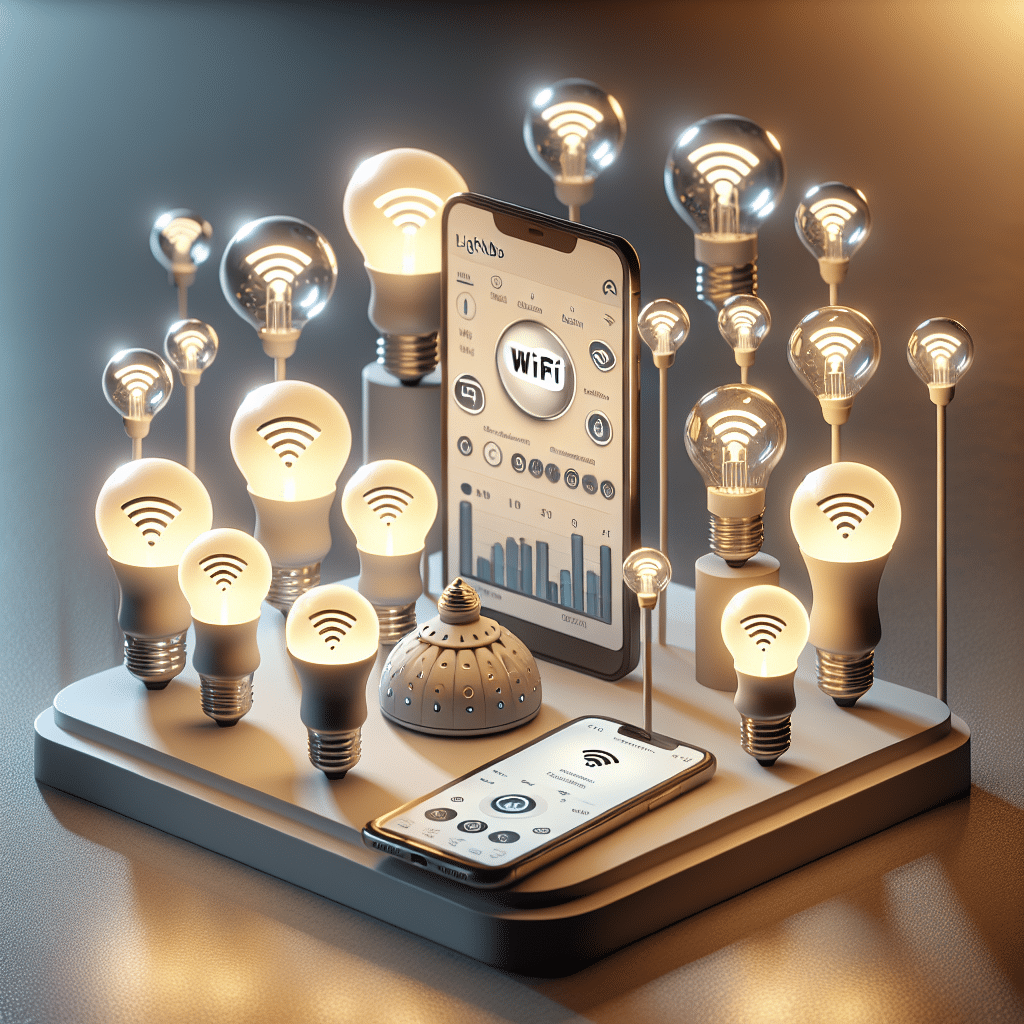Understanding Wi-Fi Enabled Smart Bulbs
Wi-Fi enabled smart bulbs have revolutionized how we illuminate our homes. These innovative devices allow users to control lighting remotely through smartphones, tablets, and voice commands. Enabled by wireless connectivity, smart bulbs eliminate the constraints of traditional lighting solutions, offering convenience, efficiency, and a host of features.
Key Features of Wi-Fi Enabled Smart Bulbs
-
Remote Control: One of the primary advantages of smart bulbs is their ability to be managed from anywhere via Wi-Fi. Users can turn lights on or off, dim them, or change colors directly from their smartphones using companion apps.
-
Voice Control: Integration with voice-activated assistants such as Amazon Alexa, Google Assistant, and Apple HomeKit allows users to control lighting hands-free. Phrases like “Turn on the living room lights” or “Dim the bedroom lights” make it easy to adjust ambiance without lifting a finger.
-
Scheduling and Timers: Many Wi-Fi smart bulbs come equipped with scheduling features that let users set timers for their lights. For example, homeowners can program bulbs to turn on at sunset and off at bedtime, enhancing both convenience and energy efficiency.
-
Dynamic Color Options: Smart bulbs offer a wide range of colors, allowing users to customize lighting by mood or occasion. With millions of color combinations available, homeowners can create a vibrant ambiance for parties or a calm environment for relaxation.
-
Energy Efficiency: Most smart bulbs use LED technology, which consumes significantly less energy than traditional incandescent bulbs. By providing energy-efficient lighting options, these bulbs help reduce electricity bills while being environmentally friendly.
-
Integration with Smart Home Systems: Wi-Fi enabled smart bulbs can easily integrate with other smart home devices, creating cohesive systems for managing home environments. Scenarios can be programmed to synchronize lighting with security systems, HVAC units, and more.
Advantages of Using Wi-Fi Smart Bulbs
-
Convenience: The ability to control lights remotely provides unparalleled convenience. Whether at work or on vacation, users can monitor and adjust their home lighting.
-
Enhanced Security: Smart bulbs can deter potential intruders by simulating occupancy. By scheduling lights to turn on and off during the evening, homeowners can make their homes appear occupied.
-
Interactive Features: Many smart bulbs come with additional features like music sync, which adjusts lighting based on music beats, enhancing entertainment experiences at gatherings or parties.
-
Long Lifespan: Smart bulbs typically last much longer than traditional bulbs, reducing the frequency and cost of replacements.
Installation and Compatibility
Installing Wi-Fi enabled smart bulbs is generally straightforward. Most models screw into standard light sockets, requiring no special hardware. Users must download the manufacturer’s app and connect the bulb to their Wi-Fi network, usually following simple step-by-step instructions.
Compatibility varies among brands, but many bulbs support widely-used platforms like IFTTT (If This Then That), enhancing automation capabilities. Brands such as Philips Hue, LIFX, and Wyze are popular for their extensive compatibility with existing smart home setups.
Things to Consider When Choosing Smart Bulbs
-
Brightness: Smart bulbs come with varying lumens, determining their brightness. Consider the intended use of the bulb, whether for mood lighting or bright task lighting.
-
Color Temperature: Color temperature, measured in Kelvin, impacts the ambiance. Warm white (around 2700K) is suitable for relaxation, while cooler temperatures (4000K and above) are ideal for workspaces and kitchens.
-
Hub Requirements: Some smart bulbs require a separate hub for operation, while others connect directly to Wi-Fi. Choosing hubless options may reduce setup complexity.
-
Ecosystem: Assessing the existing smart home ecosystem can guide compatible bulb selections. Choosing bulbs that work seamlessly with existing devices will enhance the overall smart home experience.
Top Wi-Fi Smart Bulb Options
-
Philips Hue: Known for its versatility and advanced features, Philips Hue offers a range of smart bulbs that work seamlessly with various smart home systems. The Hue ecosystem supports millions of colors and numerous app integrations.
-
LIFX: LIFX bulbs are bright and vibrant with an easy-to-use app. LIFX offers a no-hub design and is known for great color accuracy.
-
Wyze Bulbs: Wyze smart bulbs are budget-friendly and effective, with features like adjustable brightness and scheduling capabilities. The Wyze ecosystem is extensive, providing users with options that include cameras and sensors.
-
Sengled: Sengled offers affordable options with a focus on energy efficiency, making them suitable for budget-conscious consumers who still want smart lighting capabilities.
-
TP-Link Kasa Smart Bulbs: Known for user-friendly features and easy integration with smart assistants, TP-Link’s Kasa line is a solid choice for newcomers to smart lighting.
Maintenance and Troubleshooting
Maintaining Wi-Fi smart bulbs is generally low effort. Regularly updating the device’s firmware via the app ensures security and functionality are optimized. If connectivity issues arise, checking the Wi-Fi network and moving bulbs closer to the router can help.
For persistent problems, resetting the bulb usually resolves connectivity issues. This can typically be done by turning the light on and off several times to prompt a reset sequence.
Conclusion
Wi-Fi enabled smart bulbs provide a plethora of benefits that extend beyond simple light functionality. By offering convenience, energy efficiency, and integration capabilities, they represent a worthwhile investment for modern homes. By understanding their features, installation methods, and compatibility, homeowners can fully harness the advantages of smart lighting technology.
